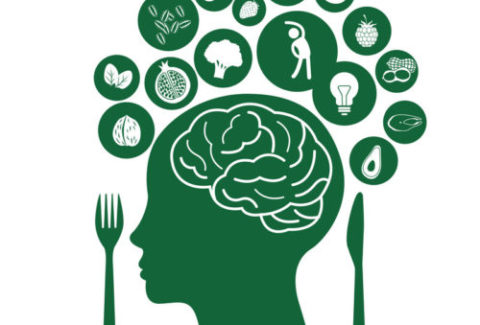Aging Gracefully: The Impact of Chronic Inflammation
Aging is a natural and inevitable process that we all experience. As the years go by, our bodies undergo various physical and physiological changes, both visible and unseen. One crucial factor in the aging process is chronic inflammation. Understanding the relationship between chronic inflammation and aging can help us make informed choices to promote healthy aging and a better quality of life.
Chronic Inflammation: The Silent Aggressor:
Inflammation is a natural response of the body’s immune system to injury or infection. It’s a defense mechanism that helps to heal wounds and protect against invading pathogens. Acute inflammation is a short-term response and is typically beneficial. However, chronic inflammation is a different story.
Chronic inflammation[1] is a persistent, low-level immune response that can go unnoticed for years. It occurs when the body’s natural inflammatory response goes awry, and the immune system mistakenly attacks healthy cells and tissues. Over time, this ongoing inflammation can cause damage to the body and has been associated with a wide range of age-related diseases[2].
The Impact of Chronic Inflammation on Aging
Cellular Aging and Age-Related Diseases:
Chronic inflammation can accelerate cellular aging[3]. Telomeres, which are protective caps at the ends of our chromosomes, naturally shorten with age. Chronic inflammation can expedite this process, leading to premature cellular aging[4]. Chronic inflammation has been linked to various age-related diseases, including heart disease, diabetes, Alzheimer’s disease, and certain types of cancer. Inflammation can damage blood vessels, promote the buildup of plaque in arteries, and contribute to insulin resistance, all of which increase the risk of these diseases.
Physical and Cognitive Decline and Joint Health:
Chronic inflammation can lead to muscle loss[5] and decreased bone density[6]. This can result in physical weakness, fragility, and an increased risk of falls and fractures. Inflammation in the brain is associated with cognitive decline and an increased risk of neurodegenerative diseases like Alzheimer’s. Chronic inflammation can impair memory and cognitive function. Inflammatory processes are also involved in conditions such as osteoarthritis and rheumatoid arthritis, which become more prevalent with age.
Causes of Inflammation:
Understanding the causes of chronic inflammation is vital for taking steps to mitigate its impact:
Unhealthy Diet, Sedentary Lifestyle, Smoking and Excessive Alcohol:
Diets high in processed foods, sugars, and unhealthy fats can promote inflammation.[7] On the other hand, a diet rich in fruits, vegetables, and anti-inflammatory foods can help reduce it. Further, lack of physical activity can contribute to chronic inflammation. Regular exercise has anti-inflammatory effects. Lastly, both smoking and excessive alcohol consumption can increase inflammation in the body.
Obesity, Chronic Stress, and Infections:
Adipose tissue (fat) is metabolically active and releases inflammatory substances. Obesity is associated with chronic inflammation[8]. Prolonged stress can also trigger inflammation[9]. Stress management techniques like meditation and relaxation exercises can therefore help mitigate its effects. Lastly, chronic infections, even low-level ones, can lead to ongoing inflammation.
Preventing Chronic Inflammation for Healthy Aging
Although we can’t completely stop the aging process, we can take steps to reduce the impact of chronic inflammation and promote healthy aging. Here’s how:
Healthy Eating, Regular Exercise, and Stress Management:
Consume a balanced diet rich in anti-inflammatory foods, such as fruits, vegetables, whole grains, and fatty fish[10]. Engage in regular physical activity to reduce inflammation and maintain muscle and bone health[11]. Incorporate stress management techniques like meditation, yoga, and deep breathing into your daily routine.
Smoking[12] and Alcohol, Chronic Disease Management, and Regular Check-ups:
If you smoke, seek assistance to quit, and consume alcohol in moderation. Work with your healthcare professionals to manage chronic conditions effectively. Regular health check-ups can help detect and address inflammation-related issues early. So, do not shy away from them.
In Conclusion
Aging, when accompanied by good health and vitality, is a beautiful journey. While we can’t stop the clock, we can certainly make choices that lead to a healthier, more vibrant aging process. Understanding the link between chronic inflammation and aging empowers us to make informed decisions that can positively impact our later years, ensuring that they are filled with vitality and well-being.
What’s Next:
- Review Past Articles: Delve deeper into nutrition and well-being, optimal health, and optimal aging by revisiting previous articles in this series.
- Stay Informed: Keep up with the latest research and recommendations on nutrition for optimal health.
- Client Conversations: Continue to engage in regular conversations with your clients about nutrition, helping them overcome obstacles to healthier eating habits.
Remember, as clinicians, your awareness and understanding of nutrition and optimal aging are essential for inspiring positive transformations in both you and your patients. This series equips you with the tools needed to empower change and optimal well-being.
Until the next article, let’s continue our quest for discovery and healing through the power of nutrition.
[1] Sanada, Fumihiro, et al. “Source of chronic inflammation in aging.” Frontiers in cardiovascular medicine 5 (2018): 12.
[2] Jenny, Nancy S. “Inflammation in aging: cause, effect, or both?.” Discovery medicine 13.73 (2012): 451-460.
[3] Cavanagh, Mary M., Cornelia M. Weyand, and Jörg J. Goronzy. “Chronic inflammation and aging: DNA damage tips the balance.” Current opinion in immunology 24.4 (2012): 488-493.
[4] Jurk, Diana, et al. “Chronic inflammation induces telomere dysfunction and accelerates ageing in mice.” Nature communications 5.1 (2014): 4172.
[5] Beenakker, Karel GM, et al. “Patterns of muscle strength loss with age in the general population and patients with a chronic inflammatory state.” Ageing research reviews 9.4 (2010): 431-436.
[6] Epsley, Scott, et al. “The effect of inflammation on bone.” Frontiers in physiology 11 (2021): 1695.
[7] Margină, Denisa, et al. “Chronic inflammation in the context of everyday life: dietary changes as mitigating factors.” International journal of environmental research and public health 17.11 (2020): 4135.
[8] Rohm, Theresa V., et al. “Inflammation in obesity, diabetes, and related disorders.” Immunity 55.1 (2022): 31-55.
[9] Miller, Elizabeth S., et al. “Chronic stress induces persistent low-grade inflammation.” The American Journal of Surgery 218.4 (2019): 677-683.
[10] Tsigalou, Christina, et al. “Mediterranean diet as a tool to combat inflammation and chronic diseases. An overview.” Biomedicines 8.7 (2020): 201.
[11] Beavers, Kristen M., Tina E. Brinkley, and Barbara J. Nicklas. “Effect of exercise training on chronic inflammation.” Clinica chimica acta 411.11-12 (2010): 785-793.
[12] Gonçalves, R. B., et al. “Impact of smoking on inflammation: overview of molecular mechanisms.” Inflammation Research 60 (2011): 409-424.









